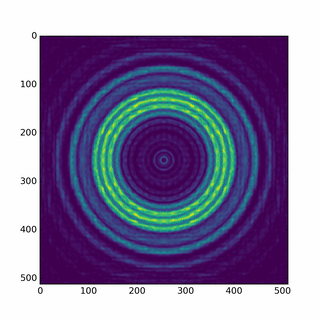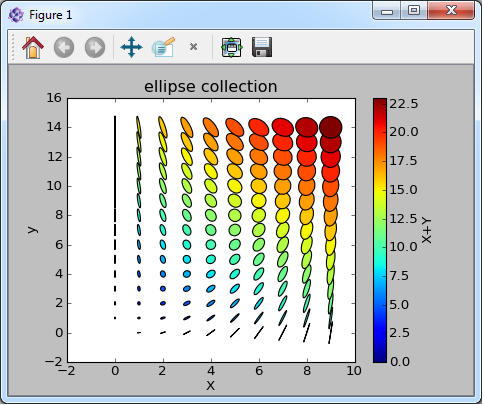

We expect the arccos of 1 to be 0, and of -1 to be pi:Īrray of the same shape as `x`, in which to store the results. Stegun, "Handbook of Mathematical Functions", The inverse `cos` is also known as `acos` or cos^-1. Has branch cuts `` and `` and is continuous fromĪbove on the former and from below on the latter. It yields ``nan`` and sets the `invalid` floating point error flag.įor complex-valued input, `arccos` is a complex analytic function that The angle `z` whose real part lies in ``.įor real-valued input data types, `arccos` always returns real output.įor each value that cannot be expressed as a real number or infinity, `arccos` is a multivalued function: for each `x` there are infinitely Scalar is returned, otherwise an array of the same shape as `x` The angle of the ray intersecting the unit circle at the given `doc.ufuncs` (Section "Output arguments") for more details. Īrray of the same shape as `a`, to store results in. The inverse of `cos` so that, if ``y = cos(x)``, then ``x = arccos(y)``.įor real arguments, the domain is. Trigonometric inverse cosine, element-wise. Whether the *x* and *y* axes are autoscaled the default isĪdditional kwargs: hold = overrides default hold state Kwargs *scalex* and *scaley*, if defined, are passed on to Picker: float distance in points or callable pick function ``fn(artist, event)``

Markevery: None | integer | (startind, stride) Markerfacecoloralt or mfcalt: any matplotlib color Markerfacecolor or mfc: any matplotlib color Markeredgewidth or mew: float value in points Markeredgecolor or mec: any matplotlib color Linestyle or ls: and any drawstyle in combination with a linestyle, e.g., ``'steps-'``. Label: string or anything printable with '%s' conversion. The kwargs are :class:`~2D` properties:Īlpha: float (0.0 transparent through 1.0 opaque)Īxes: an :class:`~` instanceĬlip_box: a :class:`` instanceĬlip_path: ĭash_capstyle: ĭash_joinstyle: ĭrawstyle: įigure: a :class:`` instanceįillstyle: Plot(x, y, color='green', linestyle='dashed', marker='o', Marker, linestyle, and markercolor with:: All of the line properties can be controlledīy keyword arguments. You do not need to use format strings, which are justĪbbreviations. If you make multiple lines with one plot command, the kwargs Legends), linewidth, anitialising, marker face color, etc. You can use this to set a line label (for auto The *kwargs* can be used to set line properties (any property that hasĪ ``set_*`` method). Line styles and colors are combined in a single format string, as in String specifications can be used in place of a ``fmt`` group,īut the tuple forms can be used only as ``kwargs``. Grayscale intensities as a string (``'0.8'``).
#PYHTON PYLAB MODULE FULL#
Wonderful ways, including full names (``'green'``), hex In addition, you can specify colors in many weird and The following color abbreviations are supported: The following format string characters are accepted to control To change this behavior, you can edit theĪxes.color_cycle rcParam. Return value is a list of lines that were added.īy default, each line is assigned a different color specified by a If *x* and/or *y* is 2-dimensional, then the corresponding columnsĪn arbitrary number of *x*, *y*, *fmt* groups can be Plot(y, 'r+') # ditto, but with red plusses Plot(y) # plot y using x as index array 0.N-1

Plot(x, y, 'bo') # plot x and y using blue circle markers Plot(x, y) # plot x and y using default line style and color *args* is a variable lengthĪrgument, allowing for multiple *x*, *y* pairs with an Help on function plot in matplotlib.pyplot: The xmin, xmax, ymin, ymax tuple is returnedįor setting the x- and y-limits individually. If ``len(*v)=0``, you can pass in *xmin*, *xmax*, *ymin*, *ymax*Īs kwargs selectively to alter just those limits without changing Scaled to make the data fit comfortably within the plot box. They restore default behavior axis limits are automatically Is 'scaled' with the axis limits equal to the data limits.::Īre deprecated. Note this is slightly different than in MATLAB.:: IfĪll data is already shown, it will move it to the center of theįigure without modifying (*xmax* - *xmin*) or (*ymax*. Sets the min and max of the x and y axes, withĬhanges limits of *x* or *y* axis so that equal increments of *x*Īnd *y* have the same length a circle is circular.::Īchieves the same result by changing the dimensions of the plot box insteadĬhanges *x* and *y* axis limits such that all data is shown. = axis(*v, **kwargs)Ĭonvenience method to get or set axis properties. Help on function axis in matplotlib.pyplot:


 0 kommentar(er)
0 kommentar(er)
